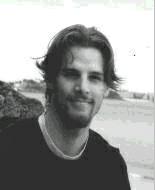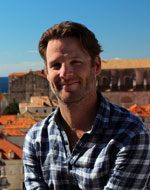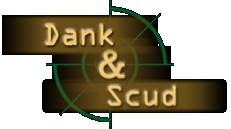 |
 
 

 
 
 
 
 |
 |
 |
About Dank and Scud
|

Then

Now
|
The Adventures of Dank and Scud was created by Michael Houston, aged 55.
He currently works as an independent ASP/SQL web application developper, located way up in the cold climate of Montreal, Quebec, Canada.
Some of his past projects (or wastes of time) include
The Last Resort: The Ultimate Deathmatch Episode for Doom II,
and a tour of his (tiny) apartment.
Dank and Scud began as a simple windows background that Michael created just to practice
his Photoshop techniques. When he wanted to brush up on his HTML, he turned that bitmap into a
three page comic. Once on the web, Dank and Scud became a hit among the growing Quake community.
Now, six issues and 30 years later, with a new site and a movie deal (yeah, right), Dank and Scud have become the Duke
Nuke'em of Quake.
|
|
CREDITS:
|
I'd like to thank the following entities for making this whole thing worthwhile:
id Software Inc.:
Thanks for making such incredible games. Whoever knew that you could do better than Doom?
Looking forward to QuakeWorld and beyond...
Andrew "Delay" Warrington: The Idea Guy. He has provided tremendous help with the storyline,
corrections, and most of all, site maintenance. You have him to thank for keeping you up to date
with Dank and Scud.
David "Davin8r" Sears: For originally giving these pages a home, as well as being a great source
of both ideas and humour for the site, like the Dank and Scud Webcam.
Greg "Wildfire" Houston: Brother Greg, the cartoon & comic genius of the family, helped with
the overall comic structure.
Nine Inch Nails: For drowning out all outside disturbances while this project was being developped.
Thanks Trent.
All Quake players, hackers and Web Page maintainers: What a following! My inspiration came from your
inspiration.
|
SOFTWARE:
|
The following software was used to create The Adventures of Dank and Scud:
Quake:
No kidding. All sets were taken from the original game.
The Quake Model Editor v 2.3 and 3.1, by Rene Post:
I used this to get the characters in the game to pose for the artist.
BSP, by Yahn Bernier:
This is the level editor I used to create some of the scenes for issue 4 and 5.
WinPak v 1.2, by Anthony J H Baratt:
This was used to extract the models I needed to throw in the comic.
Paintshop Pro v 3.11 and 4.0, by JASC Inc.:
I used this as the middleman between The Quake Model editor and Photoshop. Great capturing abilities.
Adobe Photoshop, by Adobe:
Versions 3, 4 and now 5. I used this for bringing it all together. God bless them layers!
|
HOW THE COMIC WAS MADE:
|
Here is a brief explanation of how I used the above software to bring
Dank and Scud to life.
I first create a pseudo-storyboard on paper, complete with rough sketches and panel layout. Paper is still the best
way to throw ideas around. Once the basic comic layout was made, I hunted through the Quake levels looking
for an appropriate area to use as a set for a scene. Once found I took several screenshots of the area (F12), at a high resolution
(800x600). Using the high resolution gave me the freedom to shrink the image to the required panel size
without losing much quality. I was able to remove most of the eyesores like medi-kits and the like by typing 'r_drawentities 0' at the
console. To remove the weapon-wielding hand at the bottom of the screen I changed the field of view to 89 (~fov 89).
The next step was to put the characters into the picture. To do this I used three separate
programs. First I used the Quake Model Editor, which allowed me to view each of the character's
poses from any view. Once I found the perfect pose, I screen-captured the character using Paint Shop Pro.
From this I was able to cut and paste it into Adobe Photoshop. Thankfully version 3.1 of the qME incorperated
an easy cut-to-clipboard feature, which eliminated the use of Paint Shop Pro altogether. I couldn't past the image
directly into the set, otherwise the character would be surrounded in black, so I instead pasted it to a new
image, magic-wand'ed the black areas, inversed the selection and THEN copied it into the image. A tedious process, although
Photoshop's actions helped ease the repitions.
The hardest part of the process was trying to match the character's size with the set, since I had no accurate way of
determining which size they should be. Lucky, Photoshop's anti-aliasing features made the resizing of the images merge
easily with the original set. Photoshop also allowed me to add each character as a separate layer into the panel, which
made it much easier to modify certain parts of the panel without screwing up the rest.
Once the characters were in, all that was left was to add the captions, which was again easy to
do with Photoshop.
I tried not to import any new graphics into the story, since it would ruin the overall Quake-ness
of the comic. This makes the comic look like it could actually happen during a Quake
session. Still, some outside graphics needed to be added, such as the explosion and the
Abe Lincoln statue (did you miss him?).
- MH.
|
|





























